Hawker Siddeley HS-121 Trident BEA
Production Time 9 to 10 weeks
Shipment is by FedEx, UPS or DHL International Express Courier with a normal door-to-door delivery time worldwide of within 2-3 business days after dispatch. Due to the current volatility of world fuel prices, the amount mentioned here is our best estimate for DHL and UPS and may be subject to change at the time of shipping.

Model Description: Hawker Siddeley HS-121 Trident BEA Wood Replica Scale Custom Model Aircraft
Manufacturer: Hawker Siddeley
Wingspan: 14.5 Inches (36.8 Centimeters)
Height: 4 Inches (10.2 Centimeters)
Scale: 1:81
Registration: G-AVFB
$239.50
Production Time 9 to 10 weeks
-
United States dollar ($)
-
Pound sterling (£)
-
Euro (€)
-
Australian dollar ($)
-
Canadian dollar ($)
-
Singapore dollar ($)
-
Swiss franc (CHF)
-
Japanese yen (¥)
-
Danish krone (kr.)
-
Hong Kong dollar ($)
-
Norwegian krone (kr)
-
Swedish krona (kr)
-
United Arab Emirates dirham (د.إ)
General Product Description
Our PlaneArts Hawker Siddeley HS-121 Trident BEA model exhibits unique, unrivaled quality and detailed design to come as close as possible to the accuracy of the actual plane. It comes as standard with a robust, durable base or stand which is available in a variety of different finishes designed to match your own personal requirements including solid wood, wood with polished metal supports or adjustable wood wall mount and will be ready within about 9-10 weeks from placement of order.
The Hawker Siddeley HS-121 Trident BEA model is made of the finest kiln dried renewable mahogany wood (commonly known as Lauan or Meranti) which has undergone many stages of carving and meticulous and careful sanding giving the beautiful finished museum quality masterpiece. Many collectors and model connoisseurs demonstrate their preference for genuine handmade and hand painted mahogany wood models rather than plastic or die cast (diecast) alternatives due to the overall look and totally different feel of the item - we trust you will find the same. We can, however, if required produce the same model in Solid Cast Resin so just click and contact us us for further information. Our craftsmen and gifted artisans ensure that our finely handcrafted model airplanes match the precise blueprint details of the original aircraft. The paint scheme, markings and parts are closely matched, reflecting the original aircraft. This stylish top-quality desktop replica model will surely enthrall anyone who receives this as a gift and for sure one of the most appropriate and desirably collectable gifts for any aviation enthusiast and avid aircraft collector whilst also displaying a perfect resemblance to the actual aircraft.
If you require we can also make the Hawker Siddeley HS-121 Trident BEA model in any other airline, private livery or colour scheme you require and if necessary in a different size or scale. Just click here to contact us with a description or photographs of what you require, and we will let you have a quotation for the necessary customization by return email. We can also make bespoke scale replicas of any other private / civil commercial airliner or airliners, helicopter, glider, gliders with engines, military jet, warplane jets, propeller warplanes, biplane, triplane, tail fin, spacecraft, rocket or NASA model you require in any airline, military or civilian livery or colors. We also produce model airships, blimp, dirigible, blimps, boat and ship collectibles. Wall plaque or seal for military, government or private customers. Again, by clicking here to contact us just let us know exactly what you need.
The Hawker Siddeley HS-121 Trident: British European Airways’ Workhorse
The Hawker Siddeley HS-121 Trident, a significant player in the history of British aviation, was a mainline jet airliner introduced by British European Airways (BEA) in the 1960s. The Trident was one of the first jet airliners designed specifically for the short- to medium-range market, equipped with cutting-edge technology for its time, including some of the earliest implementations of automatic landing capabilities. This article explores the key technical specifications that set the Trident apart during its era of operation.
Design and Development
The Trident’s development was a response to the specific requirements of BEA, which needed an aircraft capable of operating efficiently on European routes from airports with relatively short runways. The initial design, the Trident 1C, first flew on January 9, 1962, and entered service with BEA in 1964.
Airframe and Dimensions:
- Length: The Trident 1 series measured approximately 114 feet (34.75 meters) in length, which increased slightly in later models.
- Wingspan: It had a wingspan of 89 feet (27.13 meters), designed to provide a balance between aerodynamic efficiency and performance on shorter runways.
- Height: The aircraft stood about 27 feet (8.23 meters) tall.
- Cabin Configuration: Typically configured to accommodate around 100 to 115 passengers, depending on the variant and seating arrangement.
Powerplant:
- Engines: The Trident was initially powered by three Rolls-Royce Spey turbofan engines. These engines were known for their good thrust-to-weight ratio, essential for the short takeoff and landing performance that BEA required.
- Performance: The engines allowed the Trident to achieve a cruising speed of up to 610 mph (980 km/h), with a range of about 2,060 miles (3,320 km) depending on the specific model and load.
Avionics and Systems:
One of the Trident’s most notable technological advancements was its avionics suite. The aircraft was one of the first to feature an autoland capability, which allowed it to land in poor visibility conditions that would keep other aircraft grounded. This system was revolutionary at the time and set the standard for future developments in automated flight systems.
Operational Use:
In service, the Trident was known for its reliability and efficiency on short to medium-haul routes. It became a backbone for BEA’s European operations, although it faced competition from similar aircraft like the Boeing 727, which offered greater range and seating capacity.
Variants:
- Trident 1C: The initial model introduced with BEA, optimized for short-haul routes.
- Trident 2E: An extended-range version with improved payload capacity, introduced to allow BEA to expand its network.
- Trident 3B: Featured an extended fuselage and an additional boost engine in the tail, improving its takeoff performance and overall payload capacity.
Legacy:
Despite its success in certain aspects, the Trident was eventually overshadowed by more versatile and economical aircraft. It was phased out of mainline service in the late 1980s and early 1990s, marking the end of its era. However, the technological innovations, particularly in automated flight systems, have left a lasting impact on the aviation industry.
The Trident remains a testament to the innovation and forward-thinking of its time, addressing specific operational needs with bespoke solutions. Its story is a fascinating chapter in the history of British aviation, highlighting both the capabilities and the limitations of technology during the mid-20th century.
| Weight | 6 kg |
|---|---|
| Dimensions | 17 × 14.5 × 4 in |

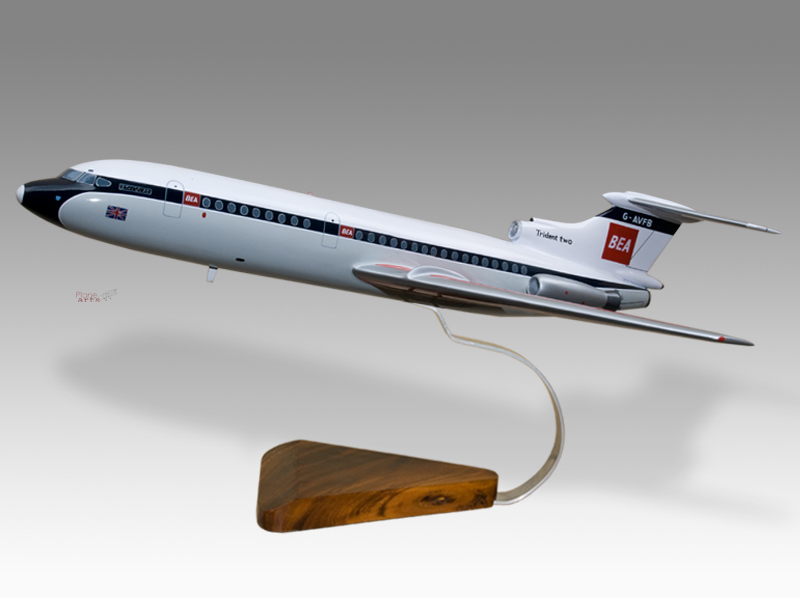
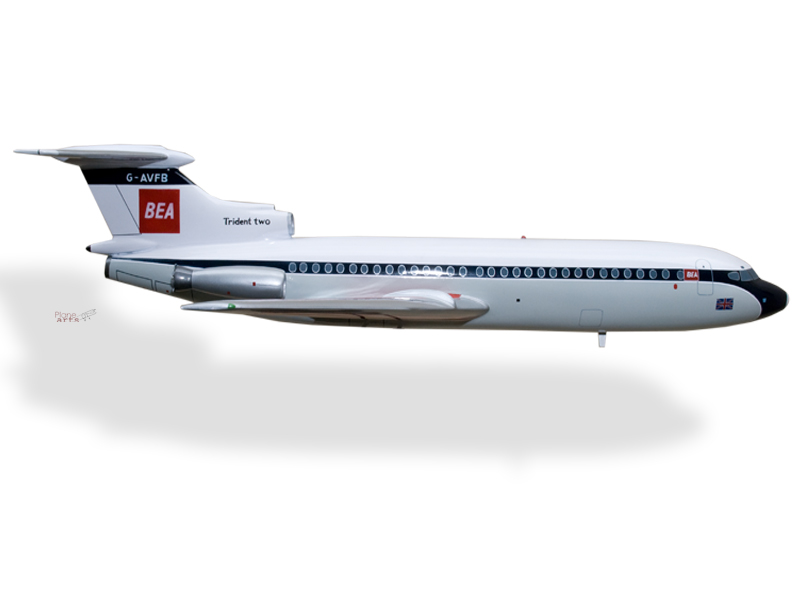
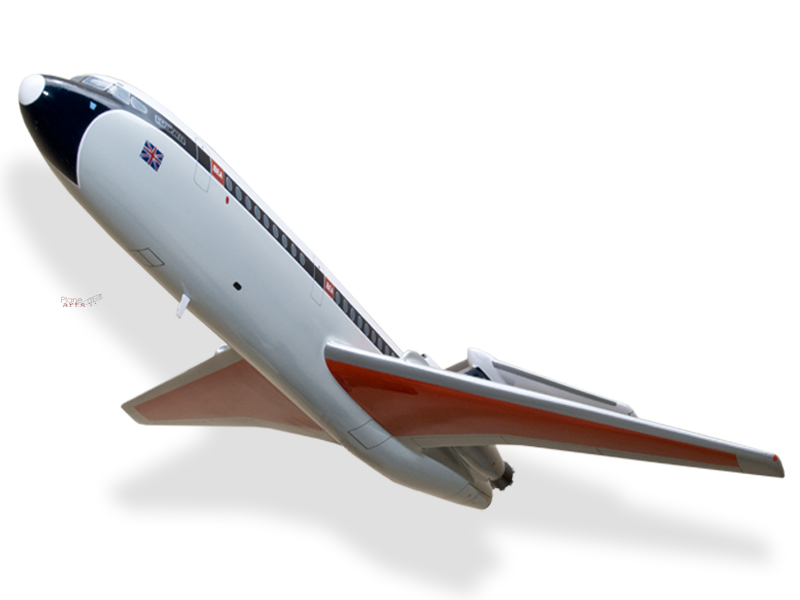
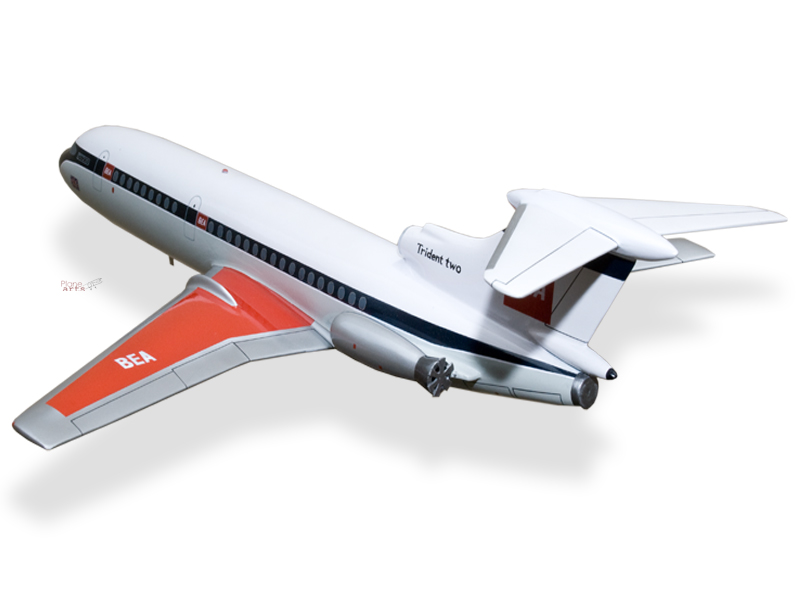
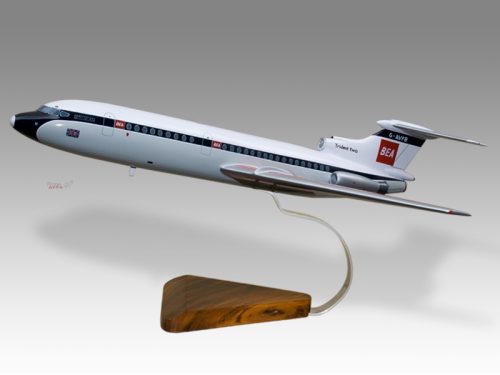

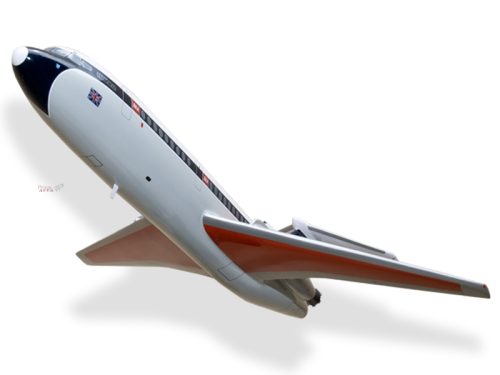
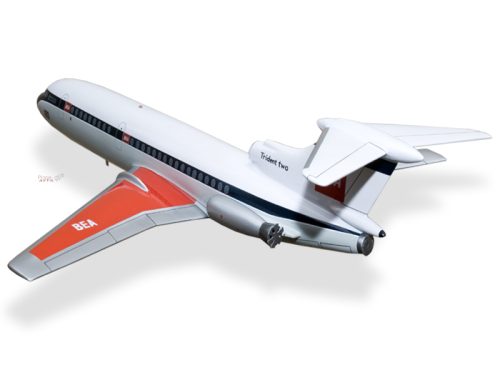
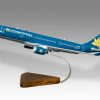
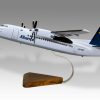
Reviews
There are no reviews yet.